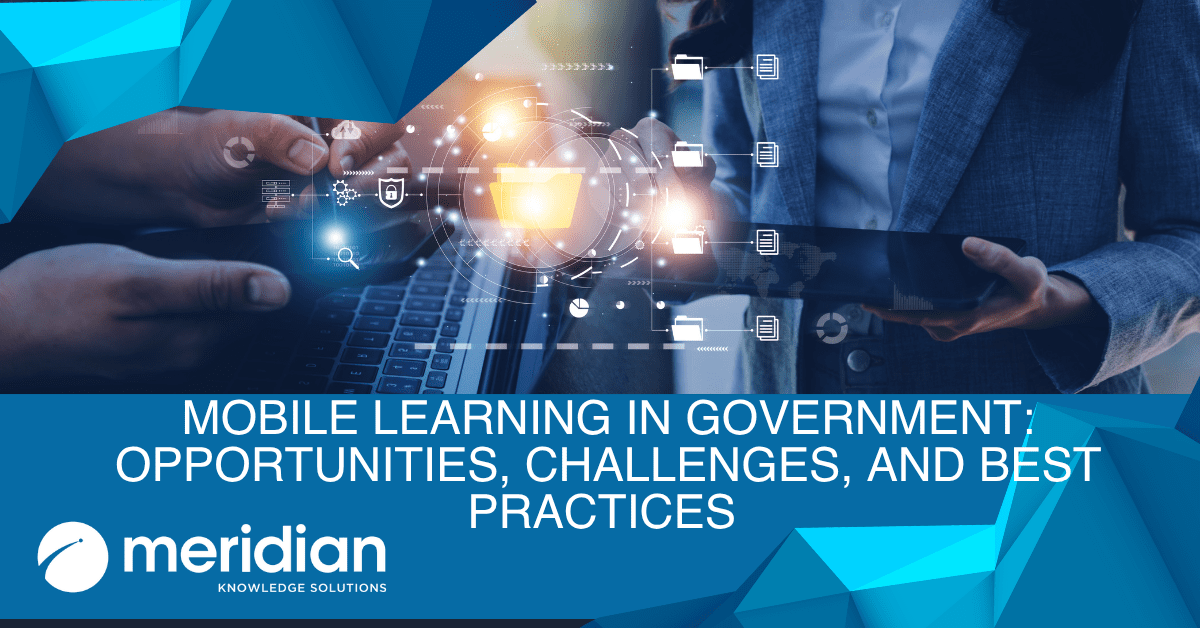
Since early March 2020, organizations across North America have experienced a dramatic shift from in-person training to online learning. Nearly 50% of classroom programs were postponed or canceled, forcing employers to rely heavily on eLearning to deliver essential training. During this period, Meridian LMS usage more than doubled year-over-year, and demand for flexible, accessible digital learning has remained high ever since.
As more organizations modernize their learning ecosystems, many evaluate LMS features, content libraries, and integrations. But one critical factor often overlooked is accessibility—a foundational element of the user experience and a key determinant of whether your workforce can successfully learn.
An LMS that is not accessible does more than frustrate learners. It exposes organizations to compliance risk, reduces training effectiveness, and creates barriers for employees who rely on assistive technologies.
Here’s what accessibility really means in eLearning—and why it must be a core requirement for your LMS.
Accessibility ensures that all learners, including those with disabilities or limitations, can:
According to the U.S. Bureau of Labor Statistics, 4% of the U.S. workforce has a documented disability. While that may seem like a small percentage, accessibility issues impact far more people—including those with:
Failure to support these learners results in reduced engagement, lower completion rates, and potential legal liability.
Accessibility isn’t optional—it’s essential for learning equity and organizational readiness.
Accessibility in eLearning is governed by well-established standards. The two most recognized are:
Created by the World Wide Web Consortium (W3C), WCAG defines accessibility levels:
Section 508 of the Rehabilitation Act requires U.S. federal agencies—and vendors selling to them—to ensure digital content is accessible for people with disabilities.
Organizations pursuing or supporting federal work must ensure LMS platforms meet 508 compliance standards.
A VPAT is a standardized document vendors use to self-assess and report how well their product conforms to WCAG and Section 508 requirements.
A strong VPAT is:
Accessibility is a core priority for Meridian. To ensure learners across industries and abilities can use the platform effectively, Meridian:
Meridian LMS is evaluated against federal Section 508 requirements to ensure accessibility for government agencies and regulated industries.
Our VPAT documents Meridian LMS conformance with:
The assessment covers primary learner, instructor, and manager workflows—the core paths used by the majority of users.
Meridian’s certified accessibility team:
Accessibility isn’t a one-time achievement—it requires continuous monitoring and refinement.
Meridian focuses not only on compliance but on practical usability, ensuring the LMS experience is intuitive and effective for learners who use:
Accessible eLearning benefits everyone—not just those with disabilities.
A compliant, well-designed LMS:
Inaccessible LMS platforms lead to exclusion, frustration, and barriers to success—problems that organizations cannot afford in a hybrid, digital-first learning world.
As organizations continue shifting toward virtual learning, LMS accessibility becomes more important than ever. If learners cannot view, understand, or interact with your training, the value of your investment is lost—and compliance risks increase.
Meridian is committed to delivering an LMS that supports every learner. Through consistent evaluation, adherence to WCAG and Section 508 standards, and a rigorous VPAT process, Meridian ensures accessibility is not an afterthought—it’s built into the platform from the ground up.
If your organization needs a secure, accessible LMS that meets federal and industry standards, Meridian is ready to help you move forward with confidence.